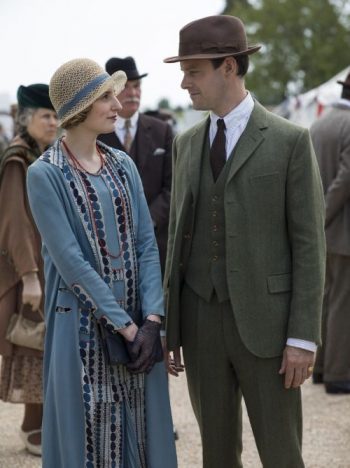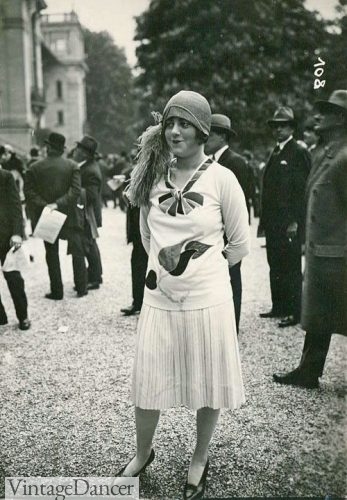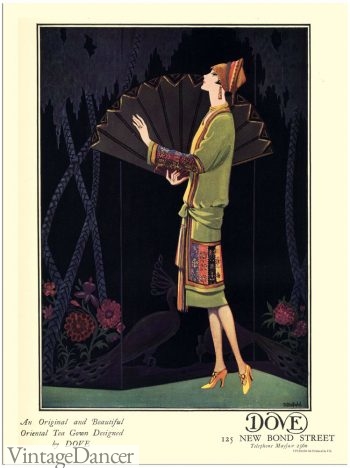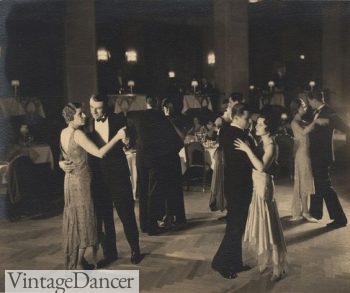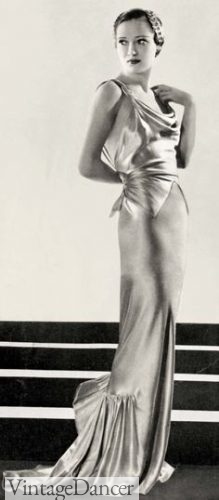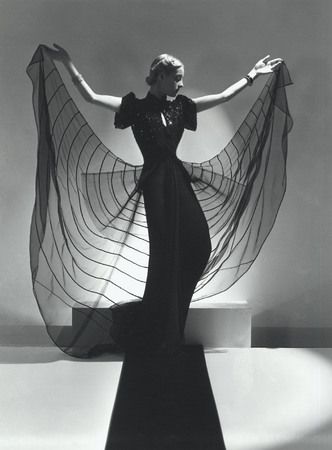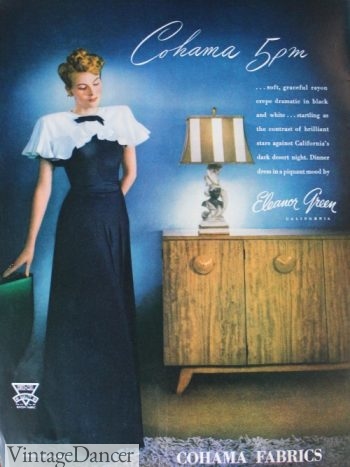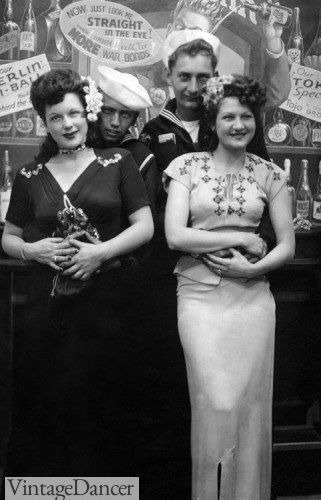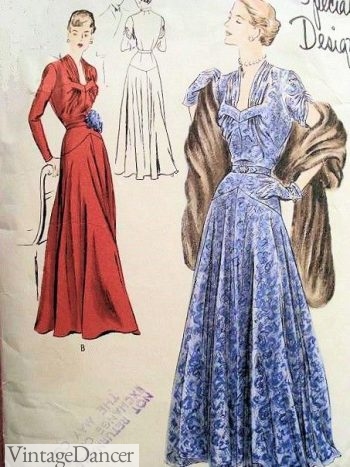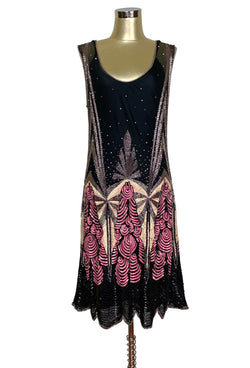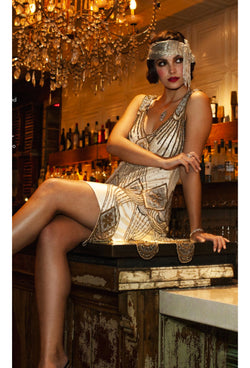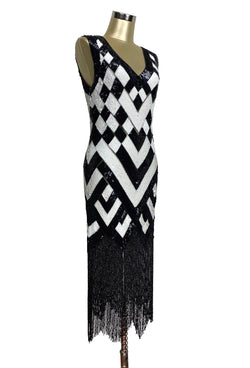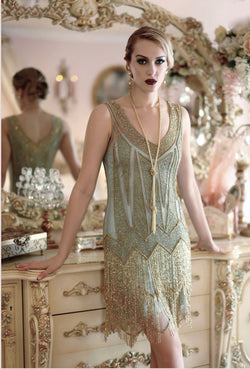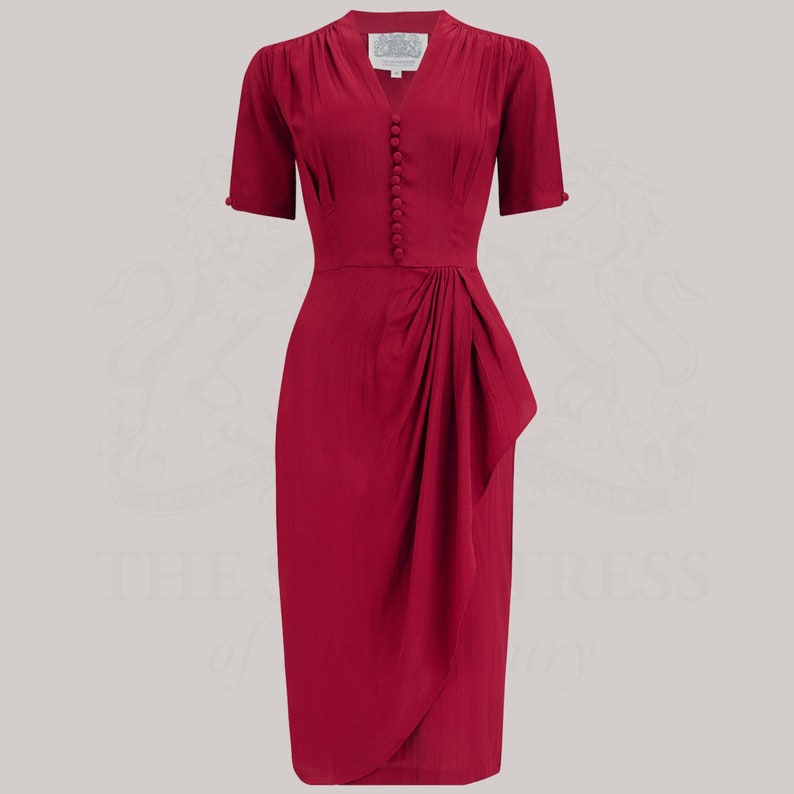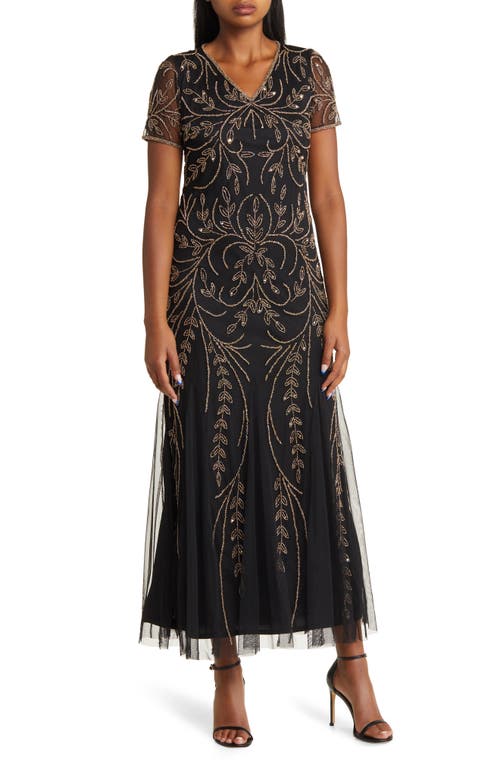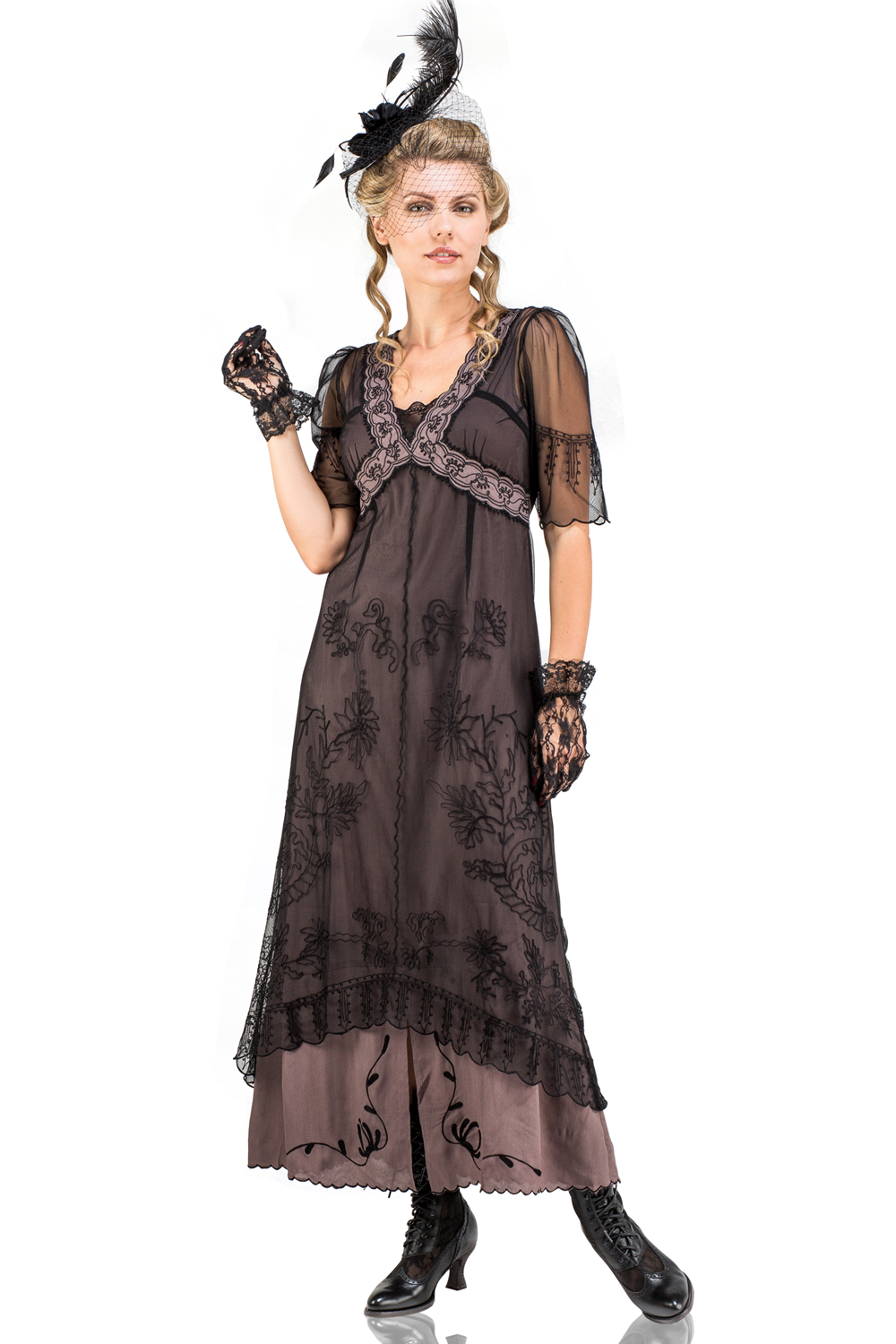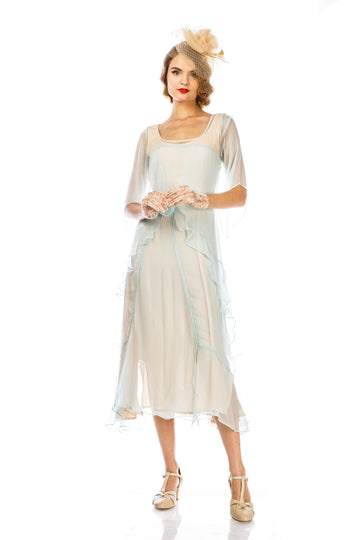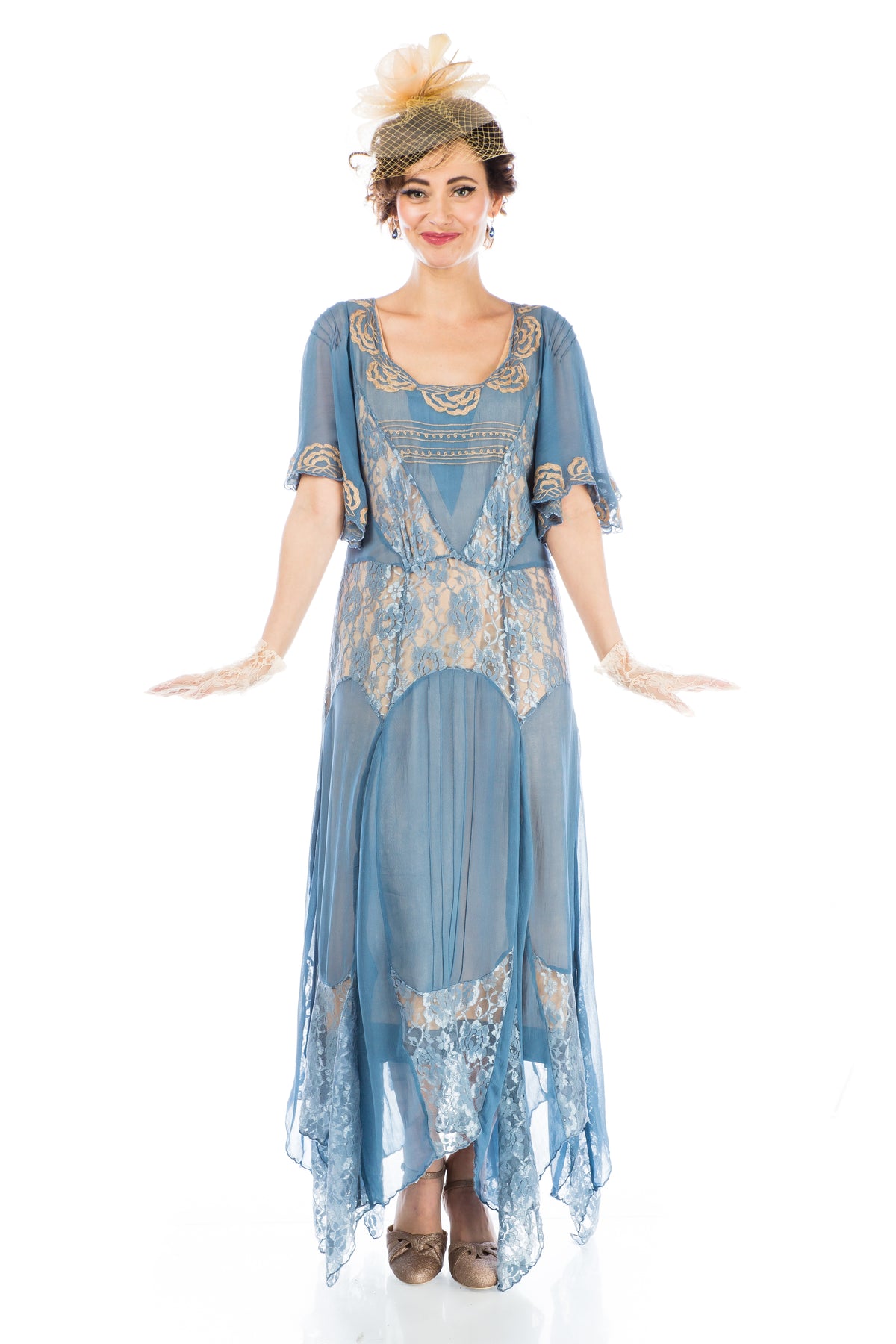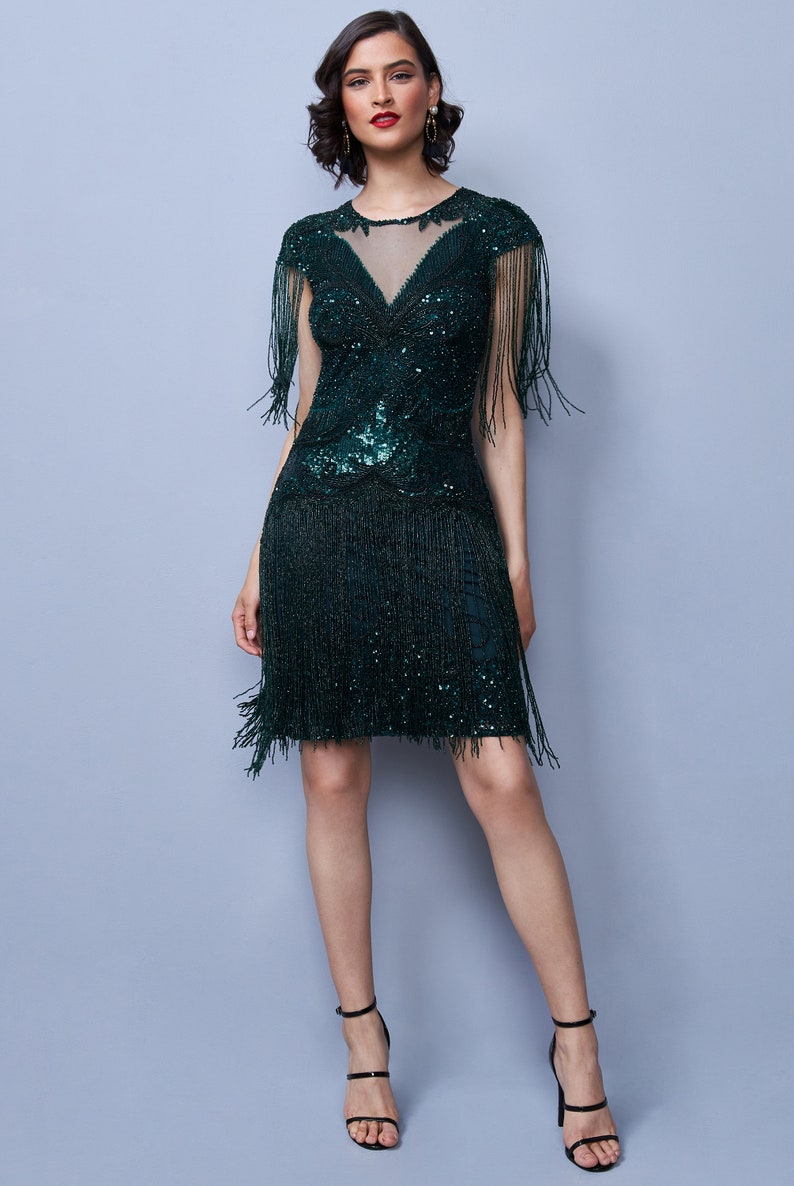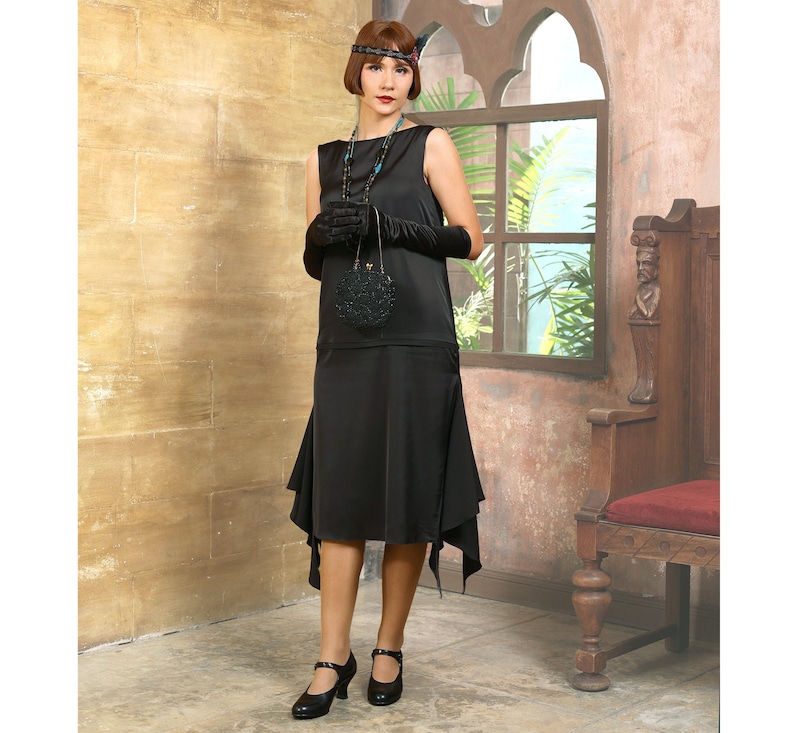The Art Deco Era was a glamorous time for evening gowns that were elegantly designed in the latest style of the 20’s, 30’s and 40’s. Art Deco fashion introduced geometric shapes and long lines, bias cut dresses, and exaggerated accessories.
Black, gold, and silver with pops of blue, orange, and yellow made up the Art Deco fashion color palette. Due to their decadence and glamor, Art Deco dresses are back in style today. Usually worn as evening gowns, Art Deco dresses are long and embellished with beads or sequins. Some have fringe and others are more inspired by flappers and classic Old Hollywood glamour.
Backless dresses and cape gowns fit the mood and are perfect for Art Deco themed events, weddings, bridesmaid dresses and fancy cocktail parties. To shop for Art Deco fashion, scroll to the bottom of the page or click here to jump.
Art Deco Fashion Characteristics
- Designers: Jeanne Lanvin, Goncharova, Sonia Delaunay, Coco Chanel
- Colors: Black, gold, silver, white
- Textures: Shiny silk and satin. Embellishments of diamond, crystal, rhinestone, pearl
- Motifs and Inspiration: Geometry, Cubism, automobiles, architecture. Russian, African, and Eastern Asian prints
The Art Deco era is associated with the advancements of modern times and the Machine Age. The new industrial and urban landscape introduced metallic colors and the simple ergonomic lines of machinery made into automobiles, trains, planes and cruise ships. Cityscapes, Art Deco architecture, and the New York skyline were popular textile prints.
These translated into new fashions that began with the early flapper look. Long and short dresses were styled to add length like a tall building. Dress colors were long, neckties draped to the waist, narrow pleats shaped skirts, and belts were thin.
Dresses were embellished with embroidery, beading, and appliques in new geometric inspired designs. Circles, rectangles, triangles, and vertical lines created refreshing decorations compared to the romantic, ruffled, and lacey, floral design of the previous movement.
- Edith’s dress in Downton Abbey has Art Deco circles cascading down the lapels and on the belt
- Art Deco day dress with embellished collar and applique
- Art Deco dress with Russian prints in the skirt and trim
As the Art Deco Era moved into the 30s, hemlines dropped to the knee or floor and the new bias (or diagonal) cut was utilized. The bias cut created a shape that formed around the body and then flared out. The 30s were less about ornamenting plain dresses than they were about draping clothing into life-size geometric shapes.
From neck to toes, Art Deco gowns graced the dance floor in shimmering columns with capes, flounces, folds and gathers that created airy movement. The look was even longer and leaner than the 20s.
- Dacning in Art Deco evening gowns
- Elsa Schiaparelli’s satin evening gown
- Late 1930s sculptural gown
Art Deco fashion continued into the 40s, although most sources seem to forget that fact. Yes, the war was on, but Art Deco art and design were at their peak. In fashion, the soft draping turned into sculptural forms, manipulating dresses into wearable statues. Stiff taffeta fabrics replace draped chiffon. Dresses took on a masculine form with a suit-like top and A-line skirt. Peplums and asymmetrical folds added to the dresses’ architecture.
In daywear, Art Deco accessories jazzed up plain and practical dresses. Belt buckles and brooches were opportunities to display Art Deco details at an affordable cost.
- 1946 exaggerated shoulders Art Deco gown
- Art Deco details embellish these cocktail dresses
- 1940s evening dress with sculpted folds and gathers
Art Deco Dresses
We searched online and found many elegant Art Deco dress styles inspired by the Roaring 20’s, elegant 30’s, and refined 40’s. Click the listing to see more colors as well as regular, petite and plus size Art Deco dress options on the merchant’s website.
Debbie Sessions has been teaching fashion history and helping people dress for vintage themed events since 2009. She has turned a hobby into VintageDancer.com with hundreds of well researched articles and hand picked links to vintage inspired clothing online. She aims to make dressing accurately (or not) an affordable option for all. Oh, and she dances too.
